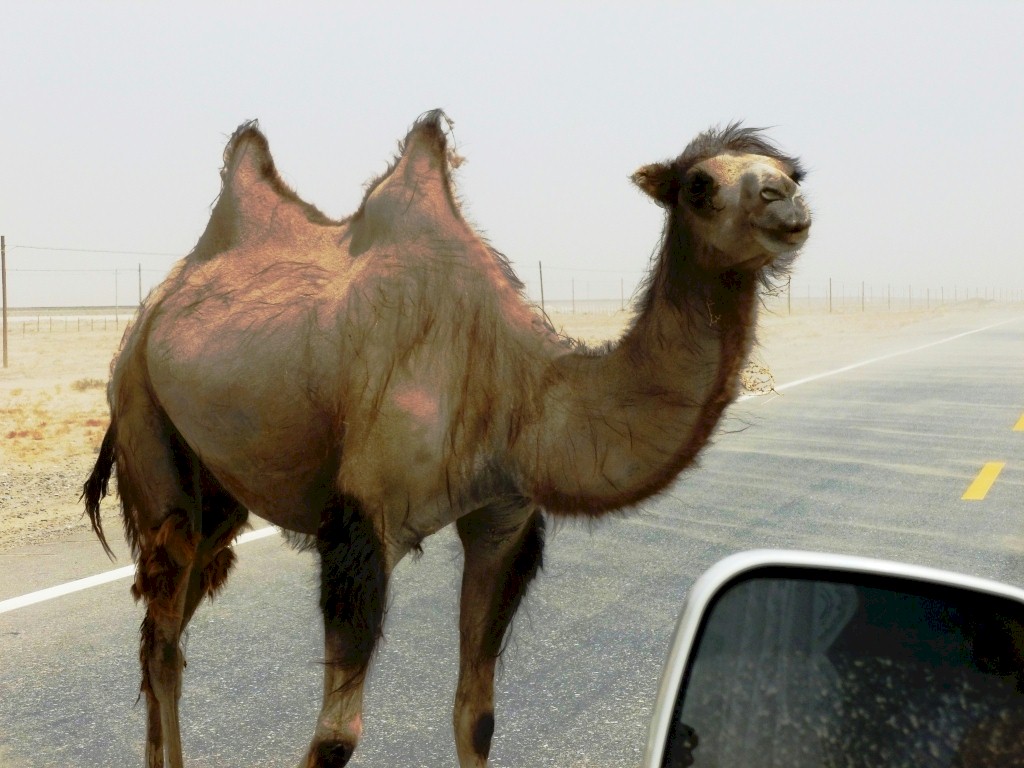The Wild Bactrian Camel (Camelus ferus) is a critically endangered species of camel that lives in northwestern China and southwestern Mongolia. It is a separate species from the domesticated Bactrian Camel (Camelus bactrianus), and is named after the region of Bactria in ancient central Asia.
Wild Bactrian camels have narrow nostrils, double rows of long eyelashes, and hair-covered ears to protect against sandstorms. They have tough soles and are adapted to conserve water. The Wild Bactrian Camel is slightly smaller and has a flatter skull and conical humps compared to the domestic Bactrian Camel. It can survive on saltier water and moves in groups of 6 to 30 individuals, migrating over long distances to seek water and food. The camels live in arid environments and breed during winter, with females producing offspring every 2 years. The current population is estimated to be around 1,000, living in a few pockets in northwestern China and southwestern Mongolia.
The wool of the wild Bactrian camel is always sandy coloured and shorter and sparser than that of domestic Bactrian camels.
They are fully migratory and widely scattered with a population density as low as 5 per 100 km2. They travel with a single adult male in the lead and assemble near water points where larger groups can also be seen. Their lifespan is about 40 years and they breed during winter with an overlap into the rainy season. Females produce offspring starting at age 5, and thereafter in a cycle of 2 years.
Their habitat is in arid plains and hills where water sources are scarce and very little vegetation exists with shrubs as their main food source.These habitats have widely varying temperatures: the summer temperature ranges from 40–50 °C (104–122 °F)[citation needed] and winter temperature a low of -30 °C (-22 °F).
The conservation of wild Bactrian camels is crucial as their population numbers are low and limited to specific regions in China and Mongolia. The Chinese government has established several nature reserves to protect and conserve these camels, such as the Lop Nur Wild Camel National Nature Reserve, the Altun Shan Wild Camel Nature Reserve, the Aksai Annanba Nature Reserve, and the Dunhuang Wanyaodun Nature Reserve (now Dunhuang Xihu Wild Camel Nature Reserve). In Mongolia, the Great Gobi A Strictly Protected Area also serves to protect the wild Bactrian camels. The most recent estimation shows that there are about 600-650 camels in the combined Altun Shan-Lop Nur reserves, about 100 camels in the Dunhuang and Mazongshan reserves, and nearly 200 in the Aksai reserve in China. The population in Mongolia is estimated to be about 800. It is important to continue to monitor and protect these animals, as their limited population makes them vulnerable to habitat loss, hunting, and other threats.
Content and photo source: Wikipedia.org
